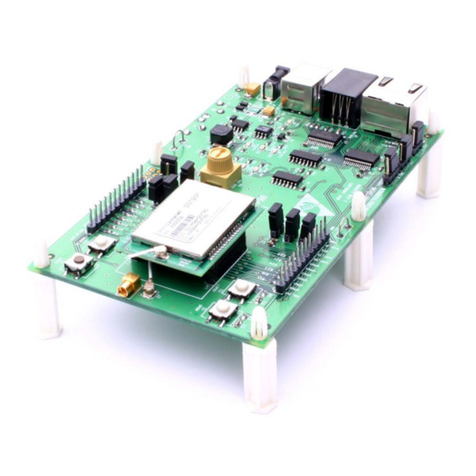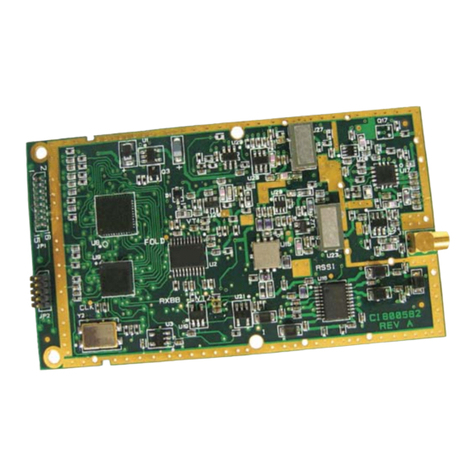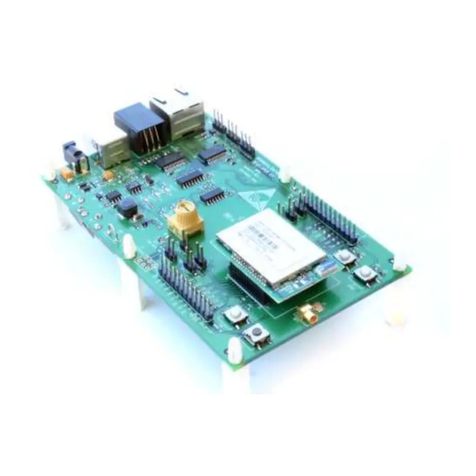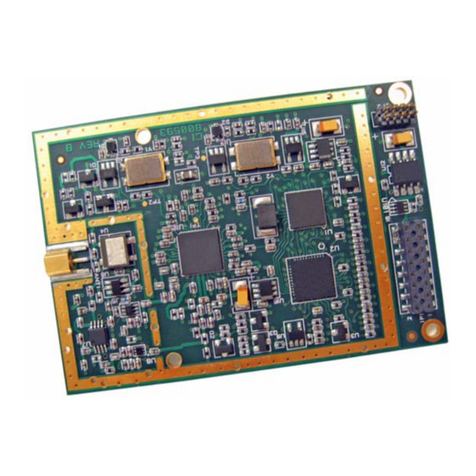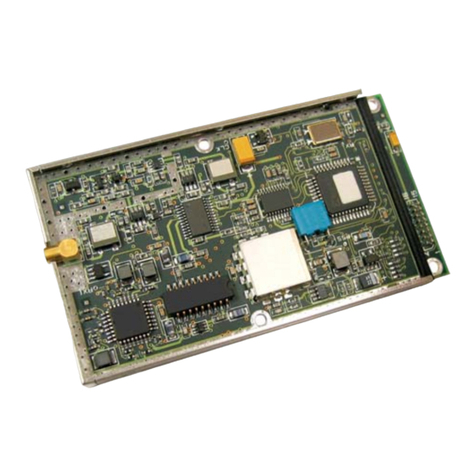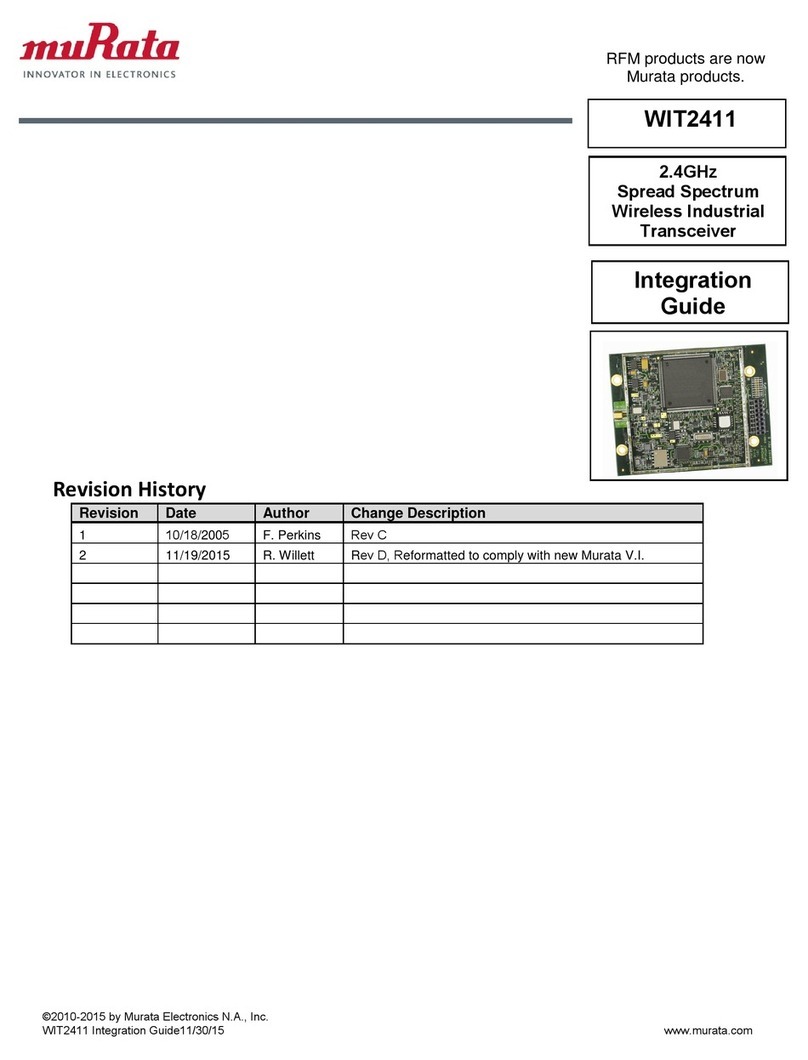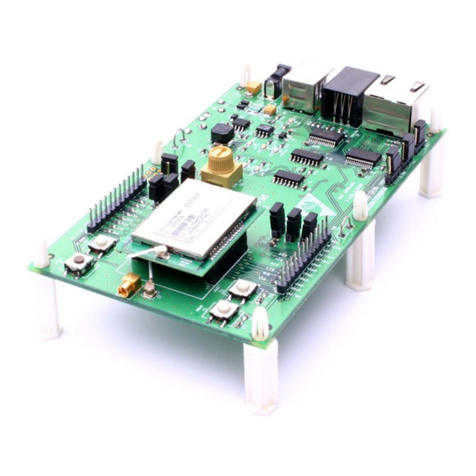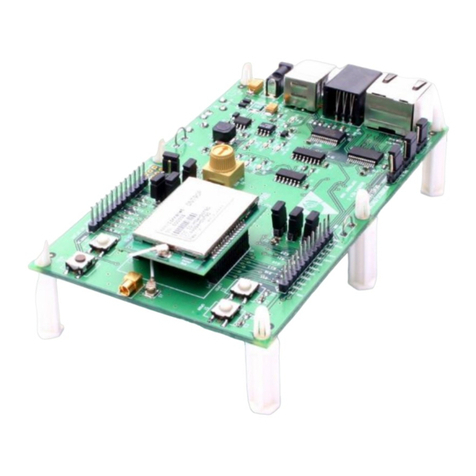
TABLE OF CONTENTS
1. INTRODUCTION ...................................................................................................................................................1
1.1 Why Spread Spectrum?...................................................................................................................................1
1.2 Frequency Hopping vs. Direct Sequence ........................................................................................................2
2. RADIO OPERATION.............................................................................................................................................4
2.1. Synchronization and Registration ..................................................................................................................4
2.2. Data Transmission .........................................................................................................................................5
2.2.1. Point-to-Point.......................................................................................................................................5
2.2.2. Point-to-Multipoint................................................................................................................................6
2.2.3. TDMA Mode.........................................................................................................................................6
2.2.4. Full Duplex Communication.................................................................................................................8
2.2.5. Error-free Packet Transmission Using ARQ........................................................................................8
2.3. Modes of Operation........................................................................................................................................9
2.3.1. Control and Data Modes......................................................................................................................9
2.3.2. Sleep Mode..........................................................................................................................................9
2.3.3. Low Power Mode and Duty Cycling.................................................................................................. 10
2.3.4. RF Flow Control Mode....................................................................................................................... 10
3. PROTOCOL MODES ......................................................................................................................................... 11
3.1. Packet Formats........................................................................................................................................... 13
3.1.1. Data Packet ...................................................................................................................................... 13
3.1.3. Connect Packet................................................................................................................................. 14
3.1.4. Disconnect Packet (base only, receive only)................................................................................... 14
4. MODEM INTERFACE ........................................................................................................................................ 15
4.1. Interfacing to 5 Volt Systems ...................................................................................................................... 16
4.2 Evaluation Unit and OEM Module Differences............................................................................................ 16
4.3 Three Wire Operation.................................................................................................................................. 16
4.4 Power-On Reset Requirements.................................................................................................................. 17
5. MODEM COMMANDS ....................................................................................................................................... 18
5.1. Serial Commands........................................................................................................................................ 18
5.2. Network Commands.................................................................................................................................... 19
5.3. Protocol Commands.................................................................................................................................... 21
5.4. Status Commands....................................................................................................................................... 24
5.5. Memory Commands.................................................................................................................................... 25
5.6. Modem Command Summary...................................................................................................................... 26
6. WIT2420 DEVELOPER’S KIT ............................................................................................................................ 27
6.1. COM24/WinCOM24 .................................................................................................................................... 27
6.2. Demonstration Procedure........................................................................................................................... 28
6.3. Troubleshooting .......................................................................................................................................... 29
7. APPENDICES..................................................................................................................................................... 31
7.1. Technical Specifications.............................................................................................................................. 31
7.1.1 Ordering Information.......................................................................................................................... 31
7.1.2. Power Specifications ........................................................................................................................ 31
7.1.3. RF Specifications.............................................................................................................................. 31
7.1.4. Mechanical Specifications ................................................................................................................ 31
7.2. Serial Connector Pinouts ............................................................................................................................ 32
7.3. Approved Antennas..................................................................................................................................... 32
7.4. Technical Support ....................................................................................................................................... 32
7.5. Reference Design ....................................................................................................................................... 33
7.6. Mechanical Drawing......................................................................................Error! Bookmark not defined.
7.7. Warranty........................................................................................................Error! Bookmark not defined.
